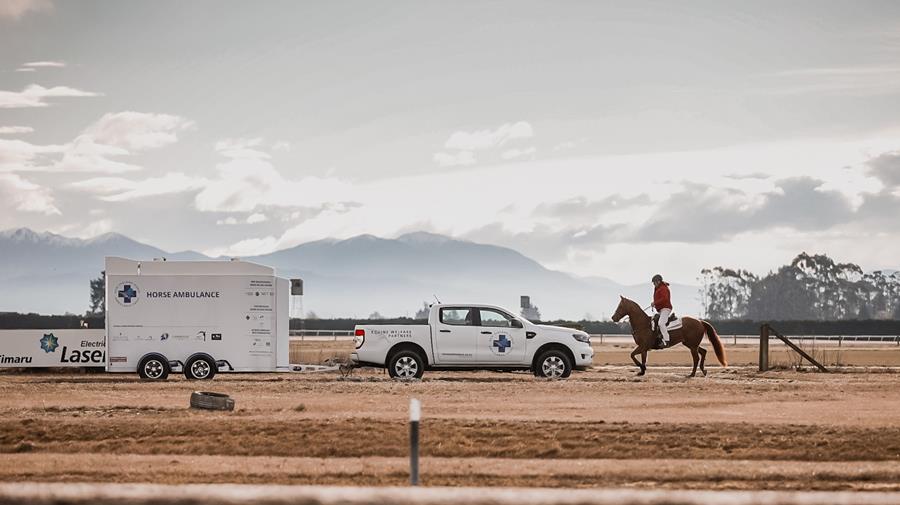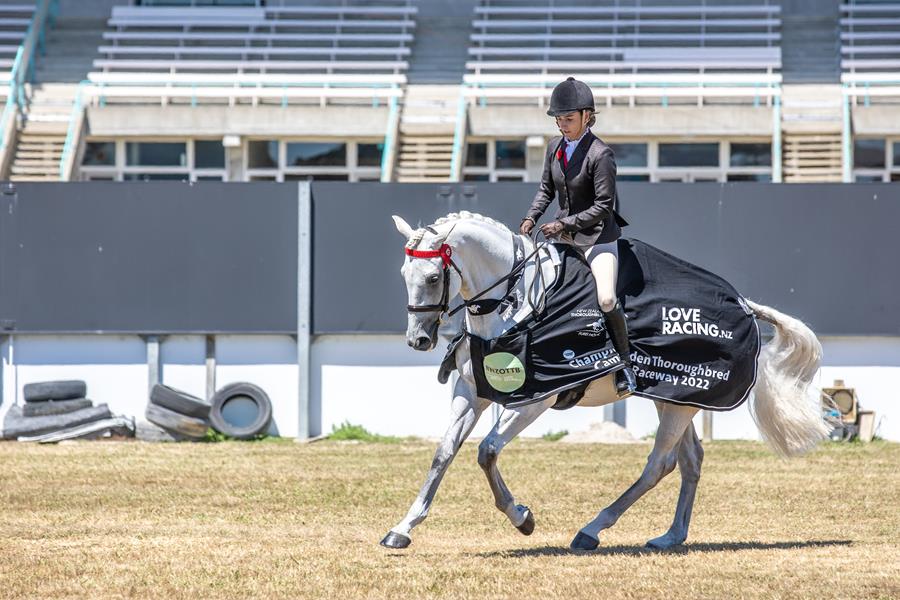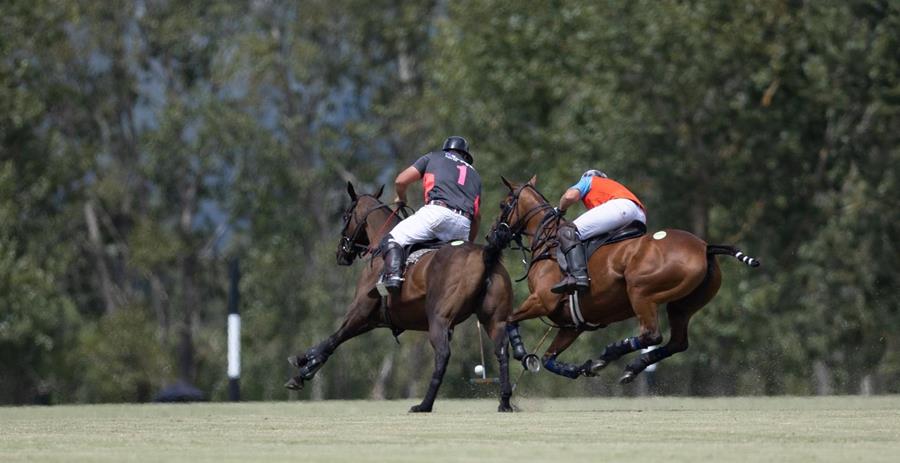Welcome to the first of NZTR’s updates designed to keep participants up to date with work undertaken to safeguard and enhance the welfare of our equine participants.
NZTR understands the importance of accountability and transparency regarding how the 1% levy is spent. In this update we will focus on providing an overview of the eight key areas that this money has been allocated to in the 2021/22 season and give some insight into why each area has been identified as key in ensuring the very best welfare outcomes for our Thoroughbreds.
ACKNOWLEDGED RETRAINERS
The Acknowledged Retrainer network began its journey in June 2021. Following prior consultation with prospective retrainers and Beyond the Barriers NZ, NZTR sought expressions of interest from individuals wishing to gain Acknowledged Retrainer status. Applicants were required to demonstrate appropriate skills and experience, a track record in successfully rehoming Thoroughbreds, and provide a range of positive references. Further along in the application process, a property inspection also takes place before Acknowledged Retrainer status may be granted.
NZTR currently has 11 Acknowledged Retrainers, located throughout both islands from Cambridge to Riverton, with the scheme having been operational since August 2021. Based on current numbers, NZTR conservatively anticipates that the network of Acknowledged Retrainers will in aggregate rehome over 300 horses within its first 12 months of operation.
Placing a Thoroughbred with an Acknowledged Retrainer satisfies that horse’s accountable person’s duty of care to ensure that the horse is rehomed appropriately. This, along with the submission of a completed SR24 retirement form, ensures that both traceability requirements and horse welfare are at the forefront when a horse is retired.
Currently 33% of the total 1% levy is allocated to support Acknowledged Retrainers by providing training in the form of residential clinics and equipment and the application, in certain conditions, of the Leg Up Grant. This grant is available in circumstances, assessed individually, where a horse would otherwise not be profitable for an Acknowledged Retrainer to rehome. NZTR is also in the process of looking at additional support options, including how a nominal ‘per horse’ payment may be suitably made available to Acknowledged Retrainers.
MEET ACKNOWLEDGED RETRAINER JESS LAND
HELPING NEGLECTED HORSES
NZTR has Memorandums of understanding with MPI and the SPCA when it comes to assisting Thoroughbreds found in a state of neglect. NZTR also has agreements with selected equine rescue groups who are reputable and have proven to be aligned with NZTR’s welfare values, uphold excellent standards, and operate in a professional manner.
NZTR uses the 1% levy to support Thoroughbreds found in a state of neglect by providing foster care, feed, and assisting with veterinary and other animal husbandry costs before each horse can be rehomed appropriately.
Currently 9% or $50,000 of the total 1% levy is allocated to assist horses in this way. So far this season, 19 Thoroughbreds have been supported and had their basic needs provided for using the 1% levy. Several of these horses have now been successfully rehomed whilst others temporarily remain in foster arrangements throughout New Zealand.
THE NEW ZEALAND HORSE AMBULANCE TRUST
Thanks to an enormous capital fundraising effort by the New Zealand Horse Ambulance Trust and generous financial support of prominent Thoroughbred entities Cambridge Stud, Valachi Racing and New Zealand Bloodstock, there are nine operational horse ambulances operational in New Zealand. This means that every Thoroughbred race and trials meeting now has a horse ambulance in attendance whilst most major training centres have one available on site or nearby, ready to be deployed as needed. Each ambulance is designed to allow an injured horse to be safely loaded and transferred to receive specialist veterinary treatment. A horse ambulance improves welfare outcomes by minimising the risk of further or worsening injury throughout the patient transfer process.
The 1% levy is used to cover the operational cost of having a horse ambulance in attendance at every Thoroughbred Race or Trials meeting, for the 2021/22 season this is a cost of $114,000 or 19% of the overall 1% welfare levy on stakes money. Taking account of all race or trial meetings, this works out to less than $4 per starter.
So far in the 2021/22 season, horse ambulances have responded to 22 incidents involving Thoroughbred racehorses. To learn more about the New Zealand Horse Ambulance Trust you can visit their Facebook page or website.

COMMUNICATIONS
This season, 13% of the welfare levy on stakes money is allocated to communication, with both internal and external audiences. Welfare communications aim to educate the wider public on the excellent welfare standards experienced by the majority of Thoroughbreds in New Zealand. The communication budget is also able to highlight the variety of second and sometimes third careers that the #NZOTTB goes on to thrive in, in conjunction with our post-racing sponsorship endeavours.
This portion of the welfare levy spend allows NZTR to ensure the most up to date research is presented to the industry, such as the video below which explains the benefits of early exercise.
Another way in which the 1% levy allows NZTR to communicate about our off-track Thoroughbreds is by having a presence at key equine lifestyle events such as Equifest and the Horse of the Year show. Here, NZTR can connect with the equestrian community, provide education on the support available to Thoroughbreds in their lives after racing and pick up more invaluable traceability data.
POST-RACING SPONSORSHIP
New Zealand Thoroughbred Racing continues to support our #NZOTTBs in their lives after racing through numerous different sponsorship avenues. Currently 14% of the overall welfare levy is allocated to promote Thoroughbreds in their second careers. From NZTR’s perspective, the benefits to post racing sponsorship are threefold, delivering the following benefits,
- Incentivizing the uptake of Thoroughbreds into other disciplines and promoting their versatility,
- Gaining valuable traceability data,
- Demonstrating the variety of a ‘life after racing’ to external audiences and the public.
NZTR currently funds Thoroughbreds in Equestrian Sports (TiES) which is run in conjunction with ESNZ. TiES runs as a series throughout the equestrian competition season and awards accumulator points for Thoroughbreds competing across Show Jumping, Show Hunter, Dressage and Eventing.

NZTR also provides sponsorship to Beyond the Barriers NZ, the New Zealand Show Horse Council and various independent organising committee’s throughout New Zealand who host specific classes for Thoroughbreds, showcasing their versatility.
In 2020, NZTR also launched its Thoroughbreds in Polo Scheme in conjunction with the New Zealand Polo Association and its representative clubs. This season, the scheme has expanded and has resulted in NZTR gathering the details of approximately 350 Thoroughbreds who are currently competing in Polo which is a huge benefit to NZTR’s Traceability Endeavours. In addition, NZTR has been able to use collaborative media opportunities to highlight the #NZOTTB’s competing in Polo internationally and those involved in Polo breeding in New Zealand.

RESEARCH
This season, 5% of the total welfare levy on stakes money will be used to support research that will provide greater insight into and understanding of the factors that influence Thoroughbred Welfare and Injury. This work will be undertaken in conjunction with Massey University and other Academic Institutions.
In addition, NZTR has recently initiated a pilot trial of diagnostic technology supplied by equine data science Company, Arioneo to explore how enhanced physiological metrics can be made available to trainers in real time as horses work. In addition to providing further insight into a horse’s physical fitness and response to exercise, this technology should aid in early detection of injuries or conditions that could pose a tangible threat to horse welfare.
TRACEABILITY
NZTR appreciates the efforts of Accountable Persons in promptly submitting the SR24 Death or Retirement forms for their horses. Whilst NZTR is proactively chasing up returns for horses that have not raced or bred in recent periods, the system of traceability for our Thoroughbred population is greatly enhanced by these returns being submitted in a timely and accurate manner.
This matters greatly in assisting NZTR to better understand and explain how our population of horses that have been bred and trained to race, then progress to their ‘second careers’. We provided an overview of our traceability data in NZTR’s 2021 Annual Report (page 16), and look forward to being able to better refine such analysis in the future. There’s no fee attached to the SR24, and no excuse to failure to file! We are looking forward to the introduction of NZTR’s new data systems which will make the process of filing even easier.
While thinking about traceability, filing returns and data analysis is one thing, but we continue to be thrilled with every entry in our ‘Wall of Fame’ which showcases the many and varied lives in second careers that our horses enjoy. We have this week passed 200 Thoroughbreds on ‘the wall’.
Whether you have details to provide regards death or retirement, or which to nominate your loved retired horse for the Wall of Fame, please contact Donna Cameron via traceability@nztr.co.nz.
WELFARE MONITORING AND COMPLIANCE
There’s not too much to report in this area yet other than that NZTR and the Racing Integrity Board are collaborating in the planning of effective programmes of oversight of welfare compliance including stable visits.
WRAPPING UP
I hope this initial update is interesting and useful to your understanding of NZTR’s welfare initiatives.
The 1% levy on stakes is critically important in sustainably funding these initiatives, and we are committed to being accountable for this spending through these updates and in NZTR’s Annual Reports.
As the levy commenced in September 2021, this funding is new, and NZTR intends to spend this carefully and on viable long-term programmes. This means that in the initial season or two, as we scope out additional and potentially sizeable and exciting welfare opportunities NZTR will commit a percentage of ‘welfare reserve’ that will be committed to such future use.
If you have feedback on this update, or ideas for NZTR to consider, please get in touch with me.
As a bonus read, if you are interested in what’s going on globally regarding initiatives to support Thoroughbred’s post-racing, please read the latest Global Aftercare Newsletter which has been compiled by the International Forum for the Aftercare of Racehorses (IFAR). IFAR is a collaborative forum for the exchange of ‘best practice’ ideas and initiatives that assist the retired Thoroughbred. NZTR has been an active member of IFAR since its first major conference in 2017. Like 2021, this year’s conference is being held online on 5 & 19 April. All sessions will be available for public review on the IFAR website.
Kind regards,
Martin Burns
GM – Welfare & Sustainability
M: 0275 110 348
E: martin.burns@nztr.co.nz




